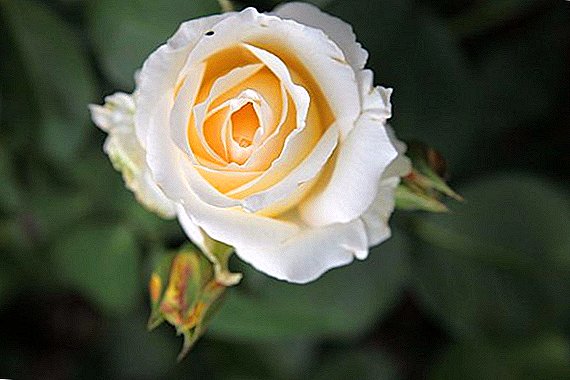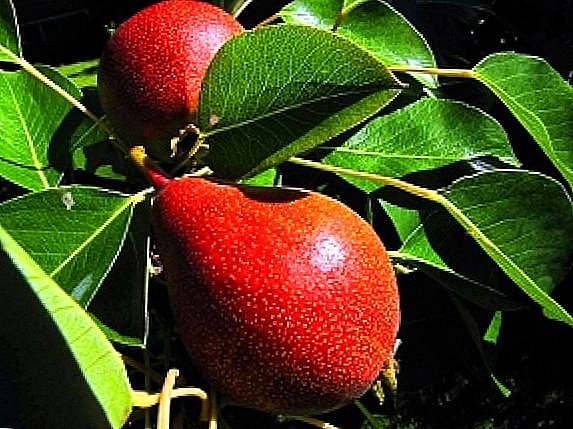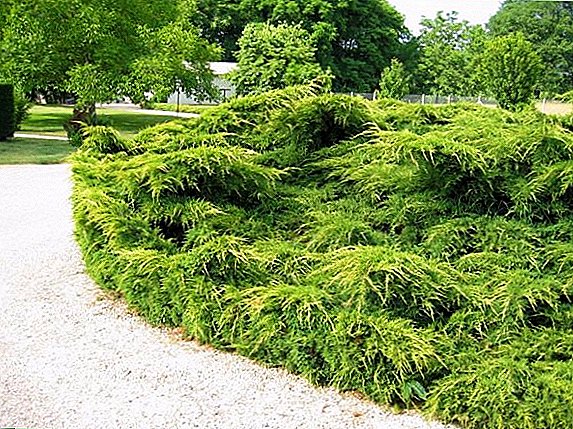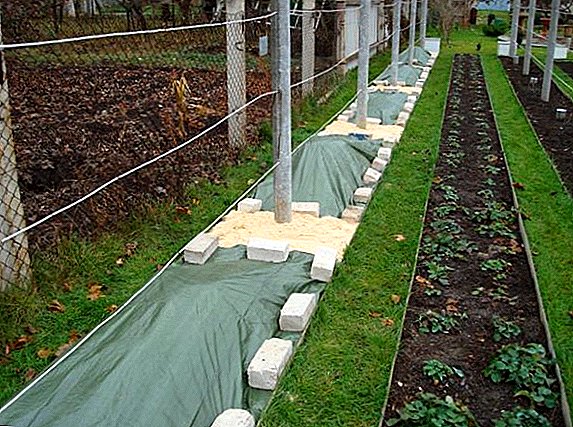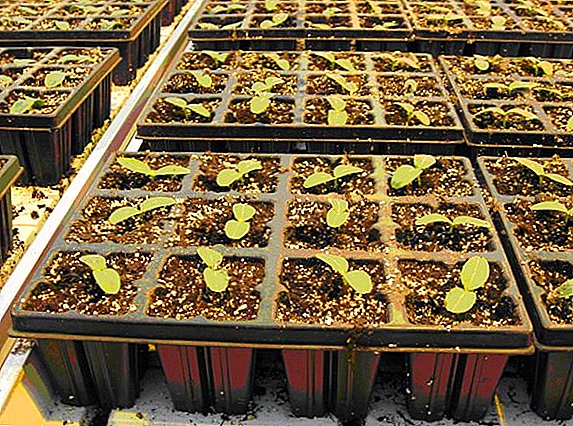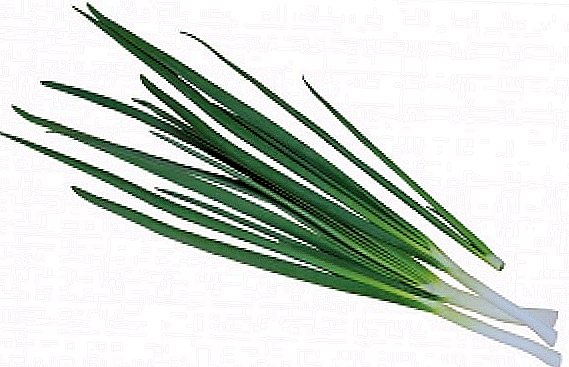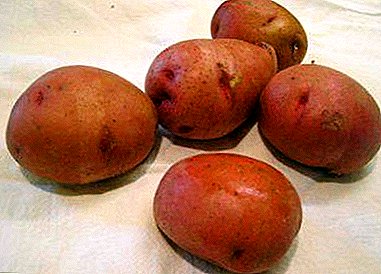
For its relatively short existence, the Irbitsky variety of potatoes managed to win a huge number of fans among gardeners.
Appreciate it, above all, for the tasty and beautiful large tubers, high yields and unpretentiousness.
This potato is able to adapt to any growing conditions and is sufficiently resistant to most of the nightshade diseases.
Description varieties Irbitsky
| Grade name | Irbit |
| general characteristics | medium early table variety with even tubers and good adaptability to conditions |
| Gestation period | 65-70 days |
| Starch content | 12-17% |
| Mass of commercial tubers | 100-185 gr |
| The number of tubers in the bush | 6-10 |
| Yield | 250-400 centners / ha |
| Consumer quality | good taste, suitable for any dishes |
| Recumbency | 97% |
| Skin color | pink |
| Pulp color | yellow |
| Preferred growing regions | Volgo-Vyatka, West Siberian |
| Disease resistance | medium resistant to phytophthora, resistant to golden potato cyst nematode |
| Features of growing | agrotechnical standard |
| Originator | "Europlant Pflanzenzucht GmbH" (Germany) |
Potatoes Irbitsky usually attributed to the mid-ripening varieties, since the period from germination then the technical ripening is from 70 to 90 days. It was listed in the State Register of the Russian Federation for cultivation in the Volga-Vyatka and West Siberian regions, but also became widespread on the territory of other countries - Ukraine and Moldova.
From one hectare of landing usually collect from 250 to 400 centners of this potato.
One of the most important indicators that matter when choosing a variety for cultivation is its yield. In the table below you will find this characteristic in different varieties presented on our website:
| Grade name | Yield |
| Irbit | 250-400 centners / ha |
| Santa | up to 570 c / ha |
| Tuleyevsky | 400-500 c / ha |
| Gingerbread Man | 450-600 c / ha |
| Ilinsky | 180-350 c / ha |
| knapweed | 200-480 c / ha |
| Laura | 330-510 c / ha |
| Blue-eyed | up to 500 kg / ha |
| Adretta | up to 450 kg / ha |
| Alvar | 295-440 c / ha |
Potatoes Irbit super elite red is different wonderful taste and has table appointments.
It does not impose special requirements on the composition of the soil, but it feels best in those soils where annual or perennial grasses, flax, have grown before. leguminous and winter crops. In the sandy soil, this variety can be planted after lupine.
It is characterized by extreme resistance to such dangerous diseases as potato cancer, golden potato cyst nematode, late blight, wrinkled and banded mosaic, as well as leaf curling virus.
The semi-upright shrubs of this plant have an average height and an intermediate type of growth. They are covered with leaves of dark green color with wavy edges, the size of which exceeds the average. Corolla is characterized by medium size and strong anthocyanin color of the inner side.
For this type of potato characteristic round tubers with small eyes. They are covered with reddish skin, under which the light yellow flesh hides. The weight of the root can vary from 108 to 190 grams, and the starch content in this potato is at the level of 13.0-16.5%.
The Irbitsky variety was bred by Russian breeders in 2009.
Stability is another important characteristic for potatoes. In the table below you will find this indicator for different varieties of potatoes:
| Grade name | Stickiness |
| Irbit | 97% |
| Breeze | 97% |
| Zekura | 98% |
| Kubanka | 95% |
| Burly | 97% |
| Felox | 90% |
| Triumph | 96% |
| Agatha | 93% |
| Natasha | 93% |
| Red lady | 92% |
| Uladar | 94% |
Irbit variety is well kept. Read more about the temperature and storage time, about possible problems. And also about how to store the roots in the winter, in drawers and on the balcony, in the refrigerator and peeled.
A photo
Look at the photo: Irbit potato





Growing up
The planting of this potato in open ground carried out in May. The distance between plants should be 60 centimeters, and between rows - 35 centimeters.
When planting, seeds should go into the ground by 8-10 centimeters. The main activities of plant care during the growing season should be loosening the soil and hilling of plants, as well as removing weeds or mulching, watering.
The depth of the first loosening should be from 10 to 12 centimeters, and subsequent - 6-7 centimeters.
The first hilling should be done when the plants reach a height of 15-17 centimeters, while the size of the soil ridge should be 18-20 centimeters. The next hilling should be done before closing the tops.
Infrequent watering should be combined with the application of mineral and organic fertilizers. During one season it is necessary to carry out no more than three such procedures.
Read more about how to feed potatoes, when and how to apply fertilizer, how to do it when planting.
 A very important place in the cultivation of potatoes are spraying different drugs.
A very important place in the cultivation of potatoes are spraying different drugs.Read all about the use of herbicides, fungicides and insecticides.
Diseases and pests
This type of potato is practically not susceptible to known diseases. However, information on diseases of the nightshade may be useful to you. Read all about Alternaria, Fusarium, Scab, Verticillis.
From the pest invasion, you can save it with insecticide drugs. Potatoes Irbitsky valued gardeners for their unpretentiousness.
Read more about the Colorado potato beetle and its larvae, and the measures to combat them - chemical and folk remedies. As well as everything about the potato moth and drugs against it, wireworms and ways to get rid of this pest.
And - ease of growing, excellent yield, high product characteristics and great taste, as well as good keeping quality.
Read also all about the most different ways of growing potatoes: Dutch technology, the crop without weeding and hilling, under straw, in bags and barrels, in boxes, from seeds. And also, how to grow early varieties and how to turn this process into a business.
We also offer to familiarize yourself with other varieties of potatoes that have different ripening terms:
| Middle late | Medium early | Superstore |
| Son | Darling | Farmer |
| Crane | Lord of the expanses | Meteor |
| Rogneda | Ramos | Juvel |
| Granada | Taisiya | Minerva |
| Magician | Rodrigo | Kiranda |
| Lasock | Red Fantasy | Veneta |
| Zhuravinka | Jelly | Zhukovsky early | Blue | Typhoon | Riviera |


